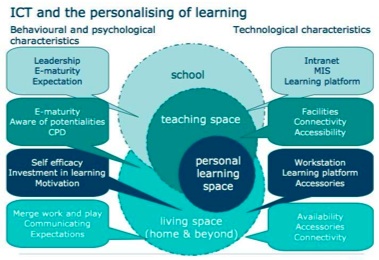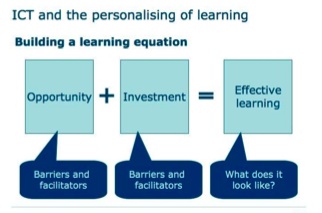personalisation
When the UK government first started talking about personalisation, it was tipped to be the next ‘big thing’, not just in educational terms, but across the public sector. In 2004, David Miliband, the then Secretary of State for Education, said that personalised education was about:
‘tailoring education to ensure that every pupil achieves and reaches the highest standards possible. It is also about personalising the school experience to enable pupils to focus on their learning and involve the community.’
Note the inital focus on schools; personalised learning became a theme across the FE and Skills and HE sectors too. Although a number of models were developed to demonstrate personalised learning in practice, there was a distinctive reluctance to define it much further than that, the intent being that it would be interpreted at the local level to suit local need. And interpreted it was, in multiple ways and in multiple contexts, in some contexts leading to confusion, and in other contexts leading to new and more learner-friendly ways of learning and teaching.
Research into the ways in which technology relates to personalising learning told us that:
1. There was often a discrepancy between learners, teachers and leaders’ perspectives of what personalised learning meant for their context.
2. Technology could provide unique and distinctive opportunities for making personalised learning a reality, for example in enabling rapid and meaningful feedback to learners, but it could also create the illusion of ‘individualised’ learning while restricting more innovative work.
Underwood et al (2007, 2008) developed and tested a model for personalising learning with technology that provides a useful starting point for thinking about these issues in more depth. It was developed for the school context, and it would be interesting to know more about whether or how it might be applied to the school context.
Model for personalised learning:

Underwood et al also developed an associated 'learning equation'. Here, ‘Opportunity’ is described as the accessibility and use of technology in schools, teaching spaces, learning spaces and living spaces. ‘Investment’ is described as the ‘learner space’, and includes both the cognitive and affective domains of learning. Self-regulation and executive function were all found to be key to ensuring technology was able to impact on outcomes, and on effective learning in the classroom. While the model and the equation have been tested, one might question whether it would be applicable in non-school contexts, and outside the time in which it was developed. This is particularly relevant given the varying pace of technological and educational change.

To find out more, read Underwood et al's the full reports here and here.
Watch a film about using technology to personalise the teaching of soft skills such as communication and team-working in a school in Doncaster, produced for Becta and viewable at http://research.becta.org.uk/index.php?section=rh&catcode=_re_vi_hi_03&rid=15543
As you're watching, think about whether you would classify this as 'personalisation'. Where does the locus of power lie in this learning context?
You may also be interested to reading an accompanying report by Robinson and Sebba et al (2008) ‘Personalising learning: the learner perspective and their influence on demand’ This study investigated the use of technology to enhance learner voice and choice in schools. The research team found it very difficult to find good case study material at the time. Why do you think that is?
